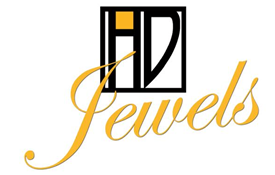Product Description
Antonio Pineda “Hands” cufflinks, sterling, signed c. 1940’s


Antonio Pineda “Hands” cufflinks, sterling, signed c. 1940’s
ALBERT BARNEY (? -1955) American
JOHN C. MOORE (1907-1947) New York
TIFFANY & COMPANY (1868-) New York
“Century Modern” chocolate or demitasse pot 1936
Handwrought sterling silver, fiber handle and finial
Stamped: TIFFANY & Co. MAKERS, 22172 (pattern/date system number), 5244(order number), STERLING SILVER, 925-1000, m (John C. Moore, designer), 5 GILLS
For a related modernist service and information about Century Modern silver exhibited at the 1939 New York World’s Fair see: Tiffany Silver, Charles H. Carpenter, Jr. (New York: Dodd, Mead & Company, 1978) pp. 256, 259-261
For more information see: Tiffany Silver, Charles H. Carpenter, Jr. (New York: Dodd, Mead & Company, 1978) pp. 256, 259-261; Modernism: Modernist Design 1880-1940, The Norwest Collection, Norwest Corporation, Minneapolis, Alastair Duncan (Woodbridge, Suffolk, England: The Antique Collector’s Club, 1998), p. 240.
H: 8″ x W: 5″ x D: 3 1/4″
OTTO ECKMANN attr. (1865-1902) Germany
Pair of candlesticks c. 1900
Hand-wrought iron with floral and foliage design
H: 12 ¼” x W: 8 ¼”
Price: $7,475
Otto Eckmann (19 November 1865 – 11 June 1902) was a German painter and graphic artist. He was a prominent member of the “floral” branch of Jugendstil. Otto Eckmann was born in Hamburg, Germany in 1865. He studied at the Kunstgewerbeschule in Hamburg and Nuernberg and at the academy in Munich. In 1894, Eckmann gave up painting (and auctioned off his works) in order to concentrate on applied design. He began producing graphic work for the magazines Pan in 1895 and Jugend in 1896. He also designed book covers for the publishers Cotta, Diederichs, Scherl and Seemann, as well as the logo for the publishing house S. Fischer Verlag. In 1897 he taught ornamental painting at the Unterrichtsanstalt des Königlichen Kunstgewerbemuseums in Berlin. In 1899, he designed the logo for the magazine Die Woche. From 1900 to 1902, Eckmann did graphic work for the Allgemeine Elektrizitätsgesellschaft (AEG). During this time, he designed the fonts Eckmann (in 1900) and Fette Eckmann (in 1902), probably the most common Jugendstil fonts still in use today.
